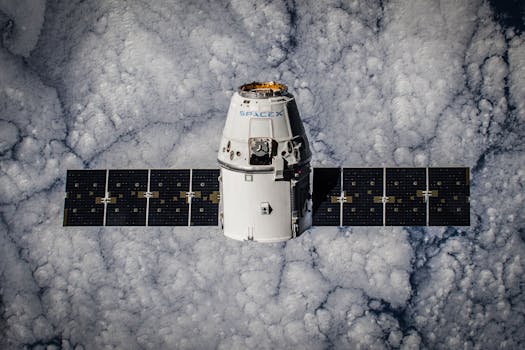The Future of Satellites: Revolutionizing Global Connectivity
The future of satellites is expected to revolutionize global connectivity, enabling faster and more reliable communication, navigation, and remote sensing. With advancements in technology, satellites will play a crucial role in shaping the future of telecommunications, commerce, and exploration.

The Future of Satellites: Revolutionizing Global Connectivity
The future of satellites is expected to revolutionize global connectivity, enabling faster and more reliable communication, navigation, and remote sensing. With advancements in technology, satellites will play a crucial role in shaping the future of telecommunications, commerce, and exploration. The future of satellites holds tremendous promise, with new technologies and innovations emerging every day. In this article, we will explore the future of satellites and their potential impact on various industries and aspects of our lives.
One of the most significant developments in the field of satellites is the emergence of small satellites or smallsats. These satellites are smaller, lighter, and less expensive than traditional satellites, making them more accessible to a wider range of organizations and individuals. Smallsats are being used for a variety of applications, including Earth observation, communication, and scientific research. They are also being used to provide internet connectivity to remote and underserved areas, bridging the digital divide and promoting global connectivity.
Advancements in Satellite Technology
Advances in satellite technology are driving the growth of the satellite industry. One of the key areas of development is in the field of propulsion systems. New propulsion systems, such as electric propulsion and advanced ion engines, are being developed to enable satellites to travel farther and faster, while also reducing fuel consumption and increasing efficiency. These advancements will enable satellites to reach higher orbits and stay in operation for longer periods, reducing the need for frequent launches and increasing the overall lifespan of satellites.
Another area of development is in the field of satellite communications. New technologies, such as high-throughput satellites and phased array antennas, are being developed to enable faster and more reliable communication. These technologies will enable satellites to transmit large amounts of data, including video and audio, in real-time, enabling applications such as live streaming and video conferencing.
Applications of Satellites
Satellites have a wide range of applications, from navigation and communication to remote sensing and scientific research. Satellites are being used to provide positioning, navigation, and timing (PNT) services, enabling accurate navigation and timing for a variety of applications, including aviation, maritime, and land transportation. They are also being used to provide weather forecasting and climate monitoring, enabling scientists to study the Earth’s atmosphere and predict weather patterns.
Satellites are also being used to provide internet connectivity to remote and underserved areas, bridging the digital divide and promoting global connectivity. This is especially important for rural communities and developing countries, where access to internet and other digital services is limited. Satellites are also being used to provide disaster response and recovery services, enabling emergency responders to communicate and coordinate their efforts in the aftermath of a disaster.
Challenges and Opportunities
Despite the many benefits and opportunities presented by satellites, there are also several challenges and risks associated with their use. One of the key challenges is the risk of collisions between satellites and other objects in space, including debris and other satellites. This risk is increasing as the number of satellites in orbit grows, and it is essential to develop strategies and technologies to mitigate this risk.
Another challenge is the issue of space debris, which is a growing concern for the satellite industry. Space debris, including old satellites and other objects, can pose a significant risk to operational satellites and other spacecraft, and it is essential to develop strategies and technologies to remove or mitigate this debris. The use of satellites to monitor and track space debris is an important application of satellite technology, and it will play a crucial role in ensuring the long-term sustainability of space activities.





